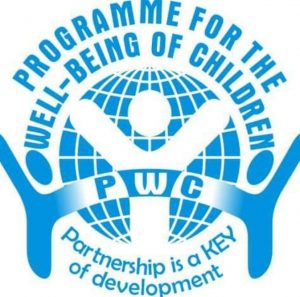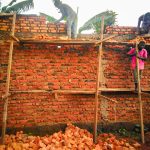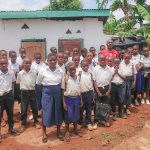Democratic Republic of Congo
Congolese children, particularly those separated from their families and/or orphaned by violence, are extremely vulnerable to hunger, disease, sexual violence, and forced recruitment by non-state armed groups.
Mugunga Community Primary & Secondary School Construction
in partnership with:

The Project: Reconstruction of a rural school in Mugunga District, North Kiva, DRC. Our efforts were aimed at reconditioning the classrooms which had been vandalized by armed militia groups who had been using the school as a local headquarters. In addition, our funding provided a four-compartment latrine for the school and classroom furniture (desks and chairs).
Location: Mugunga, North Kivu Province the Democratic Republic of Congo (DRC)
 Since the early 1990s, conflict and violence have been driving rising numbers of internally displaced people (IDPs) in the Democratic Republic of the Congo (DRC). The country’s northeastern regions have been particularly affected, where conflict continues to force tens of thousands to flee their homes. Clashes between various non-state armed groups, local defense militias, and military/government security forces combined with frequent sectarian violence resulting from competition over local power and resources have wrought havoc on civilians; many of them women and children. Environmental disasters (flooding, earthquakes) as well as epidemics (Ebola and COVID-19), have further complicated the ongoing humanitarian crisis. According to the IDMC, the DRC had the second-highest number of new conflict displacements globally in 2017, 2018, and 2019, and the highest figure for 2020, reaching 2.2 million people.
Since the early 1990s, conflict and violence have been driving rising numbers of internally displaced people (IDPs) in the Democratic Republic of the Congo (DRC). The country’s northeastern regions have been particularly affected, where conflict continues to force tens of thousands to flee their homes. Clashes between various non-state armed groups, local defense militias, and military/government security forces combined with frequent sectarian violence resulting from competition over local power and resources have wrought havoc on civilians; many of them women and children. Environmental disasters (flooding, earthquakes) as well as epidemics (Ebola and COVID-19), have further complicated the ongoing humanitarian crisis. According to the IDMC, the DRC had the second-highest number of new conflict displacements globally in 2017, 2018, and 2019, and the highest figure for 2020, reaching 2.2 million people.
Displaced Congolese children, particularly those separated from their families and/or orphaned by violence, are extremely vulnerable to hunger, disease, sexual violence, and forced recruitment by non-state armed groups. Together with international organizations, the government has taken steps to end the practice of employing child soldiers, and currently, more than 30,000 Congolese child soldiers have been demobilized from the ranks of various armed militia groups throughout the country. Despite this progress, the country’s education sector is extremely precarious and unable to integrate the growing population of displaced children and former child soldiers in host regions. Many rural schools and hospitals in the eastern DRC were besieged by warlords and armed militia groups for years, and as a result, were left vandalized and in desperate need of repair and reconstruction.
Our Local Partner Organization
Beginning in 2008, Programme for the Well-being of Children (PWC) has upheld its vision of enhancing the well-being and the preservation of the dignity of vulnerable children in Africa. Their mission is to support vulnerable children with their material and psychological needs and to defend their basic human rights. With a base in South Africa, PWC has expanded its programs into the Eastern Great Lakes region with an office in Bukavu, DRC.
PROGRAMS
- EDUCATION facilitates and advocates for equal access to education for all children regardless of their backgrounds, origins, and sexual orientation. With this activity, PWC ensures that no child is left behind from accessing his/her basic right to education. PWC also works to provide necessary educational materials to ensure that access to education is not limited nor negatively affected.
- NUTRITION is an intervention to ensure that vulnerable children and those from disadvantaged backgrounds have food security during class time and even after their classes.
- ADVOCACY program that ensures that relevant authorities are reminded of their duties and responsibilities to children regardless of their backgrounds, religion, nationalities and sexual orientation.
THE DEMOCRATIC REPUBLIC OF CONGO up close
Population: 27.69 million
Region: Island country in the Indian Ocean, approximately 400 kilometres off the coast of East Africa
Area: 587,041 km²





